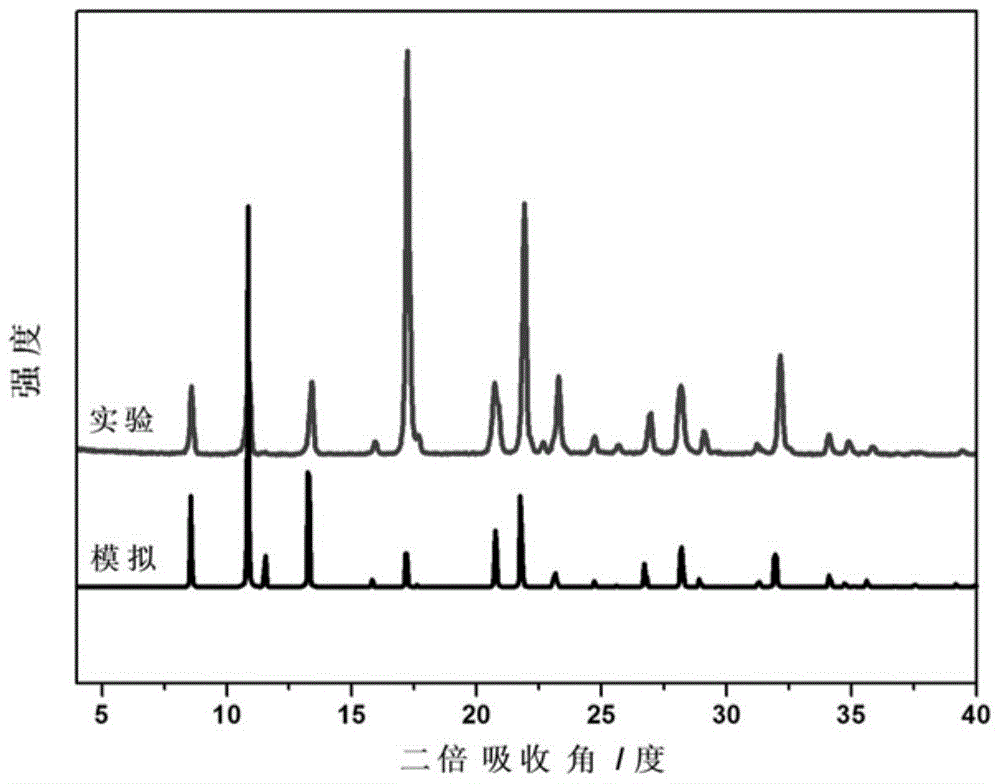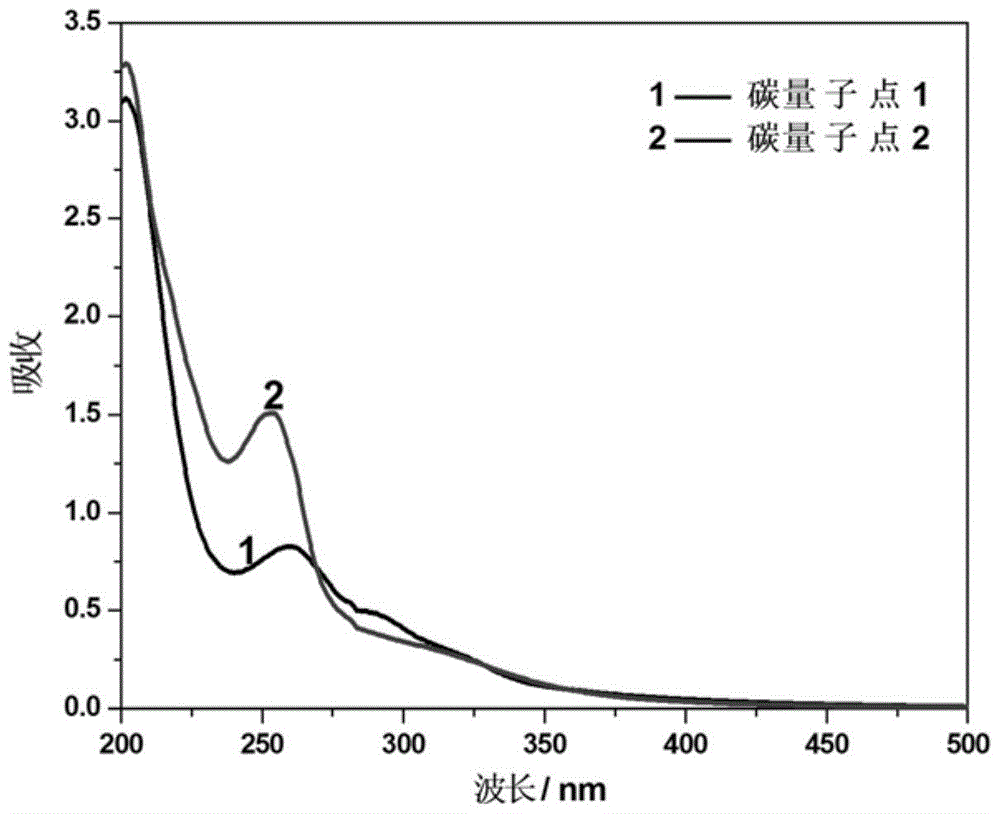Preparation of two kinds of carbon quantum dots with different luminescent properties by "one pot" method
A technology of carbon quantum dots and properties, applied in the field of preparation of carbon-based nanomaterials, can solve problems such as complex synthesis process and difficult synthesis conditions
- Summary
- Abstract
- Description
- Claims
- Application Information
AI Technical Summary
Problems solved by technology
Method used
Image
Examples
Embodiment 1
[0036] With the help of the hydrothermal synthesis and post-treatment of LEV-type magnesium-doped aluminum phosphate molecular sieve, two different fluorescent carbon dots were prepared by the "one-pot" method.
[0037] Dissolve 0.187g pseudo-boehmite in 7mL water, continue to add 0.164g magnesium acetate, 0.35mL phosphoric acid and 0.4mL azamethylpiperidine under magnetic stirring, and continue stirring for 1 hour. Transfer the obtained gel into a stainless steel reaction kettle lined with polytetrafluoroethylene, place the reaction kettle in an oven at 180°C, and heat and react for 3 days under the pressure naturally generated by the reaction kettle;
[0038] After the reaction is completed, the reaction kettle is taken out and placed at room temperature for natural cooling; the brown-yellow supernatant in the kettle is recovered (to obtain soluble carbon quantum dots CND-1). Purification of carbon quantum dots CND-1: Filter out insoluble substances with a 0.22 micron filter, and...
Embodiment 2
[0043] With the help of the hydrothermal synthesis and post-treatment of AFI-type aluminum phosphate molecular sieve, two different fluorescent carbon dots were prepared by the "one-pot" method.
[0044] Dissolve 0.575 g phosphoric acid in 7 mL water, add 0.42 g boehmite CATAPAL B and 0.56 mL triethylamine under magnetic stirring, and continue stirring for 1 hour. Transfer the obtained gel into a stainless steel reaction kettle lined with polytetrafluoroethylene, place the reaction kettle in an oven at 200°C, and heat and react for 1 day under the autogenous pressure of the reaction kettle;
[0045] After the reaction is completed, the reaction kettle is taken out and placed at room temperature for natural cooling; the milky white supernatant in the kettle is recovered (to obtain soluble carbon quantum dot CND-1). Purification of carbon quantum dots CND-1: filter out the insoluble matter with a 0.22 micron filter, and dialyze the filtrate with a dialysis bag with a molecular weight...
Embodiment 3
[0050] With the help of the hydrothermal synthesis and post-treatment of CHA-type silicon-doped aluminum phosphate molecular sieve, two different fluorescent carbon dots were prepared by the "one-pot" method.
[0051] Disperse 1.02g of ground aluminum isopropoxide in 2.1g of tetraethylammonium hydroxide aqueous solution, magnetically stir until it is completely dissolved, add 0.69g of phosphoric acid dropwise, continue stirring for 2 hours, and then slowly add 0.25g of silica sol, continue Stir for 1 hour. Transfer the obtained gel into a stainless steel reaction kettle lined with polytetrafluoroethylene, place the reaction kettle in a 170°C oven, and heat the reaction kettle for 5 days under autogenous pressure;
[0052] After the reaction is completed, the reaction kettle is taken out and placed at room temperature for natural cooling; the supernatant in the kettle is recovered (to obtain soluble carbon quantum dots CND-1). Purification of carbon quantum dots CND-1: filter out i...
PUM
| Property | Measurement | Unit |
|---|---|---|
| size | aaaaa | aaaaa |
| size | aaaaa | aaaaa |
| particle size | aaaaa | aaaaa |
Abstract
Description
Claims
Application Information
 Login to View More
Login to View More - R&D
- Intellectual Property
- Life Sciences
- Materials
- Tech Scout
- Unparalleled Data Quality
- Higher Quality Content
- 60% Fewer Hallucinations
Browse by: Latest US Patents, China's latest patents, Technical Efficacy Thesaurus, Application Domain, Technology Topic, Popular Technical Reports.
© 2025 PatSnap. All rights reserved.Legal|Privacy policy|Modern Slavery Act Transparency Statement|Sitemap|About US| Contact US: help@patsnap.com



